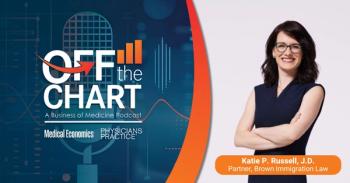
Membership Medicine Model Saves Primary-Care Dollars
Membership medicine makes good economic sense for primary-care physicians and their patients. Here's how.
Membership medicine is primary care offered directly to consumers and employers without insurance administration. You've probably heard of it described by many names, including direct primary care (DPC), direct-pay, concierge, cash-only, and retainer.
A 2014 survey by the Physicians Foundation found that 20 percent of physicians either practice or are planning to transition to one of these alternative models in the next several years. Concierge Medicine Today estimates concierge medicine and direct-pay physicians and/or physician clinics number approximately 12,000 throughout the U.S.
Why is membership medicine becoming so popular? One reason is these practices no longer generate revenue based on how many patients they see. Most membership-medicine physicians treat just six patients to 10 patients per day, versus 20 patients or more seen by physicians who bill third-party payers. According to Qliance, a DPC network,
But another force behind the growth of membership medicine is plain old common sense and economics. In a nation where healthcare costs have been skyrocketing out of control for years, membership medicine offers a new way to dramatically reduce costs for both physicians and their patients.
Reducing Costs for Patients
Think of your a patient's body as an automobile. They don't have an expensive insurance policy to cover routine maintenance like oil changes or tire rotations. They do have auto insurance for catastrophic accidents or theft. So why do people have health insurance for routine visits to their primary-care doctor?
With membership medicine, patients pay in cash for routine and affordable care, saving insurance for expensive surgeries and hospital visits. With the passage of the Affordable Care Act, the economics of membership medicine became truly compelling. A family of four can sign up for a very high-deductible plan that will cover high-cost medical expenses that rarely occur. They can simultaneously pay a reasonable monthly fee to a membership medicine practice for unlimited visits for routine healthcare, including annual exams. The majority of membership medicine practice fees, which usually include unlimited visits for primary care, cost less than $135 per month on average.
Because the patient has unrestricted access to their primary-care provider, the overall cost of the patient's healthcare can be reduced significantly. A recent analysis of two years' worth of data by Qliance shows a 20 percent reduction in overall healthcare costs annually per patient, compared to traditional healthcare delivery systems. There were simply fewer costly hospitalizations, emergency room visits, and imaging studies per patient.
Reducing Costs for Practices
There is enormous economic pressure on today's independent physician practices to take a salaried job with a large practice, hospital, or health system. Over the past decade, these physicians have been steadily squeezed between higher overhead costs and lower reimbursements. No wonder a recent survey by Merritt Hawkins found just 35 percent of physicians were either practice owners or partners in 2014 - down from 62 percent in 2008.
Membership medicine could be the answer to maintaining physician independence in the U.S. According to a recent article in The Wall Street Journal, when insurance billing isn't involved, physicians can save an average of 40 percent in overhead administrative expenses. Many membership medicine practices can have just one or two employees because billing is eliminated. These savings are passed down to patients in lower fees, but also help keep physicians practicing independently.
Some physicians find it makes more sense to have a hybrid style of practice. For example, more than 80 percent of concierge physicians accept insurance in their practice, while the remaining have cash-only healthcare practices.
Gaining Ground in Some States
Due to a patchwork of state laws and lack of federal guidance, membership medicine is gaining more ground in some parts of the country than in others. The top areas for membership medicine include southern states, such as Florida, Georgia, Louisiana, North Carolina, and Tennessee; and western states like Colorado, Texas, Utah, and Washington State.
In many states, third-party payers are fighting against membership medicine because it threatens their business model. One of the core arguments made against membership medicine is that it is just another form of insurance, and thus medical practices offering DPC should be regulated as insurance companies and made to comply with all of the same rules and regulations. Membership medicine practices argue that they are simply accepting cash for a service, just like any other business. They make an analogy between a membership medicine practice and a health club, where members pay a monthly fee to exercise as often as they want.
No matter what happens in state legislatures and Congress, there is growing public awareness of this alternative model for medicine. The fitness center industry was barely getting started in the 1970s, yet today more than 41 million Americans are members of some kind of health club. Given the demonstrated advantages of better quality care at a lower cost for patients, could similar growth for membership medicine be far behind?
Evan Pankey, MMSc, is a product manager for Pri-Med InLight EHR. Evan has designed solutions currently in use at Harvard Medical School, Children’s Hospital Boston, and Massachusetts General Hospital. He can be reached at
Newsletter
Optimize your practice with the Physicians Practice newsletter, offering management pearls, leadership tips, and business strategies tailored for practice administrators and physicians of any specialty.










